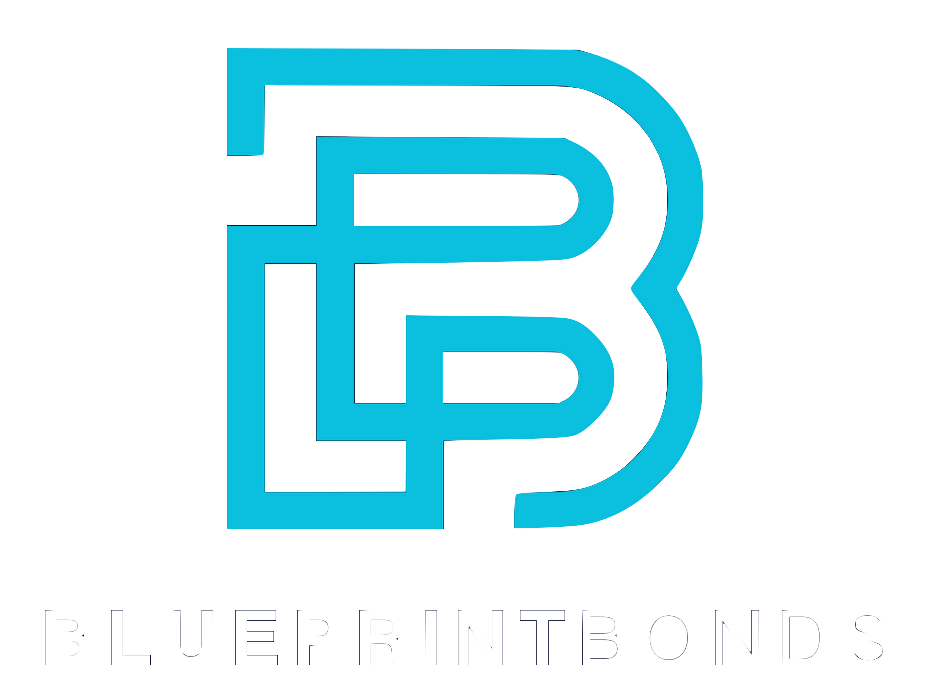Performance bonds have long been a cornerstone of construction project security, acting as a financial safety net that ensures contractors fulfill their obligations. Yet, as the construction industry evolves, questions arise about whether these bonds remain the best tool for managing risk. Are performance bonds outdated, or do they still offer unmatched value? Exploring recent studies, industry insights, and practical challenges reveals a nuanced picture that calls for smarter, more tailored approaches to project security.
Understanding Performance Bonds and Their Role Today
Performance bonds are surety instruments that guarantee a contractor will complete a project according to contract terms. If the contractor defaults, the bond issuer steps in to cover costs or arrange for completion. This mechanism has been a standard requirement in public and private construction projects for decades.
One reason performance bonds remain prevalent is their widespread legal and institutional acceptance. For example, a 2014 study found that 28 out of 41 U.S. states require a 100% performance bond on construction projects, underscoring their entrenched role in project assurance.[source]
Despite this, the premiums for these bonds typically range from 0.4% to 0.93% of the total contract value, which can add a significant line item to project budgets depending on size and complexity.[source] This cost factor has led some to question whether performance bonds are still the most efficient way to manage risk.
The Paradox of Performance Bonds
Interestingly, even though default rates on construction projects are relatively low, state transportation departments and other agencies continue to insist on performance bonds. This cautious stance reflects a paradox: bonds are expensive and sometimes seen as burdensome, yet they are regarded as essential for contractor selection and project assurance.[source]
This paradox highlights the value of bonds as a screening tool. Contractors who can secure bonds demonstrate financial stability and credibility, which helps reduce the risk of project failure. However, this raises the question of whether there are smarter, more flexible ways to achieve the same goal without the associated costs and rigidity.
In recent years, the construction industry has seen a shift towards alternative risk management strategies, such as subcontractor default insurance (SDI) and project-specific insurance policies. These alternatives can provide similar protections without the upfront costs of performance bonds. For instance, SDI allows general contractors to insure against the default of their subcontractors, potentially offering a more tailored approach to risk management. As the industry evolves, stakeholders are increasingly exploring these options to balance risk and cost-effectiveness, leading to a dynamic conversation about the future of performance bonds.
Moreover, the rise of technology in construction management is also influencing the relevance of performance bonds. Digital platforms that track project progress and contractor performance in real-time can offer a new layer of assurance, potentially reducing the perceived need for traditional bonding. By leveraging data analytics and machine learning, project owners can gain insights into contractor reliability and project viability, which may shift the focus from financial guarantees to performance metrics. This evolution suggests that while performance bonds have served a critical role in the past, the future may hold more innovative solutions that address the complexities of modern construction projects.
Economic Value and Effectiveness of Surety Bonds
The surety market is evolving rapidly, driven by both demand and innovation. Different research sources project varying growth rates, but all agree on strong upward trends. For instance, The Insight Partners forecasts a compound annual growth rate (CAGR) of 6.6%, with the market reaching $31.85 billion by 2031. This robust growth reflects increasing reliance on surety bonds as businesses seek dependable risk mitigation tools.
One of the most exciting developments is the integration of digital distribution and insurtech platforms. In 2024, pilot markets saw issuance times drop by 20 to 30 percent thanks to these technologies, offering scale advantages for firms funding B2B channels. This acceleration not only improves efficiency but also enhances access for businesses that might have previously found the bonding process cumbersome.
Artificial intelligence and automation are also transforming underwriting. More than 60% of bonding professionals incorporated AI and automation tools into their processes in 2024, with 54% using AI-driven models to evaluate applicant risks, according to EIN Presswire. These advances improve risk assessment accuracy and speed, reducing costs and making bonds more accessible.
Digital Transformation’s Impact on Surety Bonds
Digitization is breaking down traditional barriers in the surety market. Online platforms enable faster application processing, instant risk evaluation, and streamlined communication between principals, sureties, and obligees. This shift is particularly beneficial for small and medium-sized enterprises (SMEs), which often face challenges in securing bonds through conventional channels.
Moreover, digital tools facilitate better data collection and analytics, helping surety providers tailor products to specific industry needs. This customization enhances the value proposition of surety bonds, making them more relevant and attractive to a wider audience. The ability to analyze vast amounts of data allows sureties to identify emerging trends and risks, enabling them to adjust their offerings proactively. For example, construction firms can benefit from specialized bond products that account for the unique risks associated with their projects, thereby ensuring that they have the right coverage at the right time.
Additionally, the rise of blockchain technology is set to further revolutionize the surety market. By providing a secure and transparent way to record transactions, blockchain can enhance trust among stakeholders and reduce the potential for fraud. This technology could streamline the verification process for bonds, making it easier for businesses to prove their compliance with contractual obligations. As more companies explore the potential of blockchain, we may see a significant shift in how surety bonds are issued and managed, leading to even greater efficiencies and security in the marketplace.
Bisoy te neya kaj kora hoscha,please allow some time
Recent research sheds light on the tangible economic benefits of surety bonds beyond their traditional role. A 2022 Ernst & Young study found that construction projects protected by surety bonds experience lower default rates, reduced completion costs if default occurs, and faster project completion times compared to those without bonds.[source]
This data suggests that performance bonds do more than just safeguard against contractor failure. They create stronger incentives for timely and quality project delivery. The study also concluded that the overall value of surety bonds in construction projects exceeds their costs, highlighting their protective role in the broader economic context.[source]
Still, the benefits must be balanced against challenges in bond pricing and administration. The complexity of projects and regulatory uncertainty can lead to information asymmetry, where bond premiums might be overcharged or underpriced, creating inefficiencies.[source]
Moreover, the surety bond market itself is evolving, with technology playing a pivotal role in streamlining processes and enhancing transparency. Digital platforms are emerging that allow for real-time tracking of project milestones and contractor performance, which can lead to more accurate pricing of bonds and better risk assessment. This shift not only benefits contractors and project owners but also fosters greater trust among stakeholders, as the reliance on outdated methods of evaluation diminishes.
Case Study: Utah Department of Transportation
The Utah Department of Transportation (UDOT) offers a practical example of performance bond policy in action. UDOT requires performance bonds for all projects and has found that reducing bond amounts yields minimal economic benefits while increasing risk exposure.[source] This approach reinforces the idea that bonds act as a critical risk management tool, especially for public infrastructure projects where taxpayer funds are at stake. Furthermore, UDOT's commitment to maintaining robust bonding requirements has led to a marked improvement in contractor accountability and project outcomes, as firms are incentivized to adhere to high standards to avoid the financial repercussions of bond claims.
In addition, UDOT's experience highlights the importance of collaboration between government agencies and the surety industry. By engaging with surety providers, UDOT has been able to tailor its bonding requirements to better reflect the unique challenges of each project. This partnership not only enhances the effectiveness of the bonds but also contributes to a more resilient infrastructure system, ensuring that projects are completed on time and within budget, ultimately benefiting the communities they serve.
Limitations and Risks of Relying Solely on Performance Bonds
While performance bonds provide clear benefits, they are not without limitations. One significant issue is that bonds do not address all project risks, especially those related to inaccurate project forecasting and demand estimation.
A 2013 international study covering 210 transportation infrastructure projects found that passenger forecasts were overestimated by more than 20% in 90% of rail projects and 50% of road projects. Such overestimations can lead to financial and economic risks that performance bonds alone cannot mitigate.[source]
This gap means that while bonds protect against contractor default, they do not shield project owners from broader market or demand risks. Overreliance on bonds can create a false sense of security if other risk factors are not managed effectively. For instance, if a project is based on inflated demand forecasts, the resulting revenue shortfall can jeopardize the project's financial viability, leading to potential defaults that performance bonds cannot cover.
Moreover, the reliance on performance bonds can inadvertently lead to a lack of due diligence in other areas of project management. Stakeholders may prioritize securing a bond over conducting comprehensive risk assessments or engaging in thorough market analysis, which are crucial for understanding the full scope of potential challenges. This oversight can result in a project that is not only financially unfeasible but also misaligned with community needs and expectations.
Challenges in Bond Pricing and Market Dynamics
Performance bond pricing is complicated by information asymmetry between contractors, sureties, and project owners. Complex project requirements and shifting regulatory landscapes add to the difficulty of setting fair premiums.[source] This can result in either overcharging, which inflates project costs unnecessarily, or underpricing, which leaves sureties exposed to losses. Additionally, the lack of standardized metrics for assessing project risk can lead to inconsistencies in how bonds are priced across different projects and sectors.
These pricing challenges suggest a need for smarter risk assessment tools and dynamic pricing models that better reflect project-specific realities rather than one-size-fits-all rates. Innovations in data analytics and machine learning could play a pivotal role in this evolution, allowing for more accurate predictions of project outcomes based on historical data and real-time market trends. By harnessing these technologies, stakeholders can create a more transparent and equitable bond pricing system that aligns the interests of all parties involved, ultimately fostering a healthier construction ecosystem.
Exploring Smarter Security Alternatives
Given the evolving risk landscape and limitations of traditional performance bonds, the construction industry is exploring smarter security options. These include performance-based prequalification, alternative financial instruments, and enhanced project oversight technologies.
Performance-based prequalification focuses on evaluating contractors' past performance, financial health, and project management capabilities rather than relying solely on bonding capacity. This approach can reduce unnecessary bonding costs while maintaining risk control.[source]
Additionally, integrating real-time project monitoring and data analytics offers early warning signs of potential delays or cost overruns, enabling proactive interventions that bonds alone cannot provide. By utilizing advanced technologies such as Building Information Modeling (BIM) and Internet of Things (IoT) devices, stakeholders can gain insights into project progress and resource allocation, ensuring that any discrepancies are addressed promptly. This level of oversight not only enhances accountability but also fosters a culture of transparency among all parties involved in the construction process.
Balancing Cost, Risk, and Assurance
Smarter security does not mean abandoning performance bonds altogether. Instead, it involves blending bonds with other risk management tools to optimize cost and assurance. For instance, adjusting bond amounts based on project risk profiles or supplementing bonds with insurance products tailored to specific risks can create more balanced protection. This hybrid approach allows for a more nuanced understanding of potential liabilities, enabling project owners to allocate resources more effectively and minimize financial exposure.
Furthermore, the rise of collaborative contracting models, such as integrated project delivery (IPD), encourages shared risk and reward among all stakeholders. By fostering a cooperative environment, these models can lead to innovative solutions that enhance project delivery and reduce the likelihood of disputes. As the construction industry continues to adapt to new challenges, embracing these smarter security alternatives will be crucial in navigating the complexities of modern projects, ensuring that all parties are adequately protected while promoting efficiency and sustainability.
What to Remember About Performance Bonds in 2025
Performance bonds remain a vital part of construction project security, especially in public infrastructure where accountability is paramount. Their proven track record in reducing defaults and protecting project owners is backed by recent studies showing economic value beyond their cost.[source]
However, bonds are not a cure-all. They do not mitigate demand forecasting errors or market risks, and their pricing challenges require ongoing attention. Forward-thinking project owners and contractors should consider integrating bonds with smarter risk management strategies that leverage data, performance metrics, and flexible financial tools.
For those navigating construction project security, understanding the strengths and limitations of performance bonds is key to making informed decisions that protect investments without unnecessary costs. Additionally, as the construction landscape evolves, the role of technology in performance bonding is becoming increasingly significant. Innovations such as blockchain and digital platforms are streamlining the bonding process, enhancing transparency, and reducing the time it takes to secure these essential instruments. This digital transformation not only simplifies compliance but also fosters trust among stakeholders, ultimately leading to more successful project outcomes.
Moreover, the growing emphasis on sustainability and green building practices is influencing the performance bond landscape. As more projects aim for eco-friendly certifications, surety companies are adapting their underwriting criteria to account for sustainability risks. This shift underscores the importance of aligning performance bonds with the broader goals of environmental responsibility, ensuring that projects not only meet financial and operational benchmarks but also contribute positively to the community and the planet. Understanding these trends will be crucial for project owners and contractors looking to stay ahead in an increasingly competitive market.
Frequently Asked Questions
Q: What exactly is a performance bond?
A performance bond is a surety bond that guarantees a contractor will complete a project according to contract terms. If the contractor fails, the bond covers the cost to finish the work. This financial instrument serves as a safety net for project owners, ensuring that their investments are protected against potential contractor failures. It is essential in various sectors, including construction, where the stakes are high, and the completion of projects on time and within budget is critical for overall success.
Q: Are performance bonds expensive for construction projects?
Premiums typically range from 0.4% to 0.93% of the contract value, which can add up depending on project size and complexity. While this may seem like a small percentage, for large-scale projects, the costs can become significant. However, many contractors view this expense as a necessary investment in their reputation and future business opportunities, as having a performance bond can enhance their credibility and make them more attractive to potential clients.
Q: Do all states require performance bonds?
Many do. For example, 28 out of 41 U.S. states surveyed require a 100% performance bond on projects. The requirements can vary widely based on the type and size of the project, as well as the specific regulations of each state. This variability can create challenges for contractors who operate across state lines, as they must navigate differing legal landscapes and compliance requirements.
Q: Can performance bonds prevent all project risks?
No. They mainly protect against contractor default but do not cover risks like inaccurate demand forecasts or market changes. Other risks, such as unforeseen site conditions or changes in project scope, can still lead to delays and additional costs. Therefore, while performance bonds are a valuable tool for risk management, they should be part of a broader strategy that includes thorough project planning and risk assessment.
Q: Are there alternatives to performance bonds?
Yes. Smarter security options include performance-based prequalification, insurance products, and real-time project monitoring. These alternatives can provide flexibility and may be more suited to certain projects or contractors. For instance, performance-based prequalification assesses a contractor's past performance and financial stability, allowing project owners to make informed decisions without the need for a traditional bond.
Q: Why do transportation departments still require bonds despite low default rates?
Bonds act as a screening tool and provide assurance that contractors are financially stable and capable of completing projects. Moreover, they help maintain a level playing field in the bidding process, as all contractors must meet similar financial guarantees. This requirement can foster a competitive environment where only the most qualified contractors are awarded projects, ultimately leading to better quality work and more successful project outcomes.




